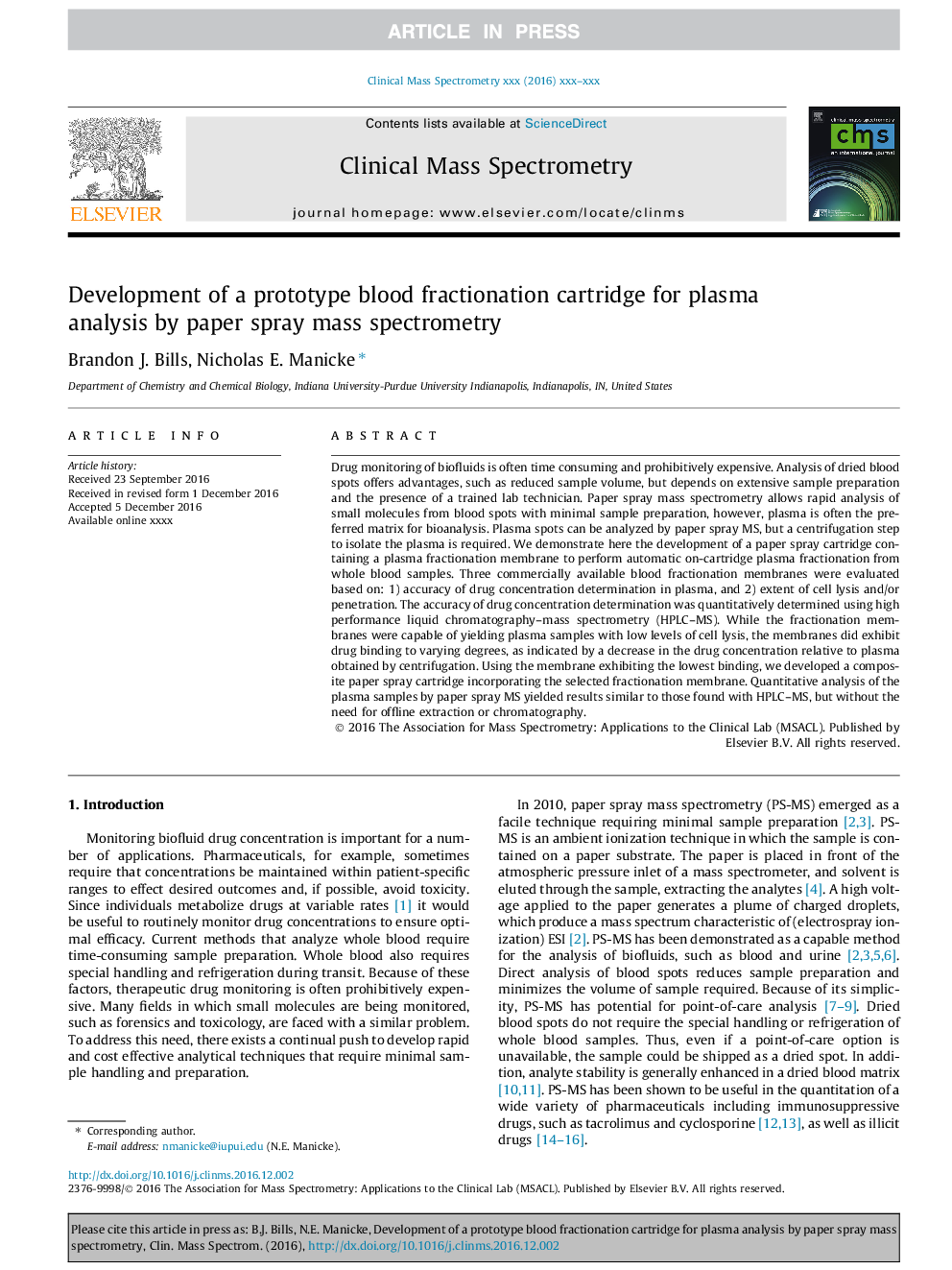| Article ID | Journal | Published Year | Pages | File Type |
|---|---|---|---|---|
| 8917904 | Clinical Mass Spectrometry | 2016 | 7 Pages |
Abstract
Drug monitoring of biofluids is often time consuming and prohibitively expensive. Analysis of dried blood spots offers advantages, such as reduced sample volume, but depends on extensive sample preparation and the presence of a trained lab technician. Paper spray mass spectrometry allows rapid analysis of small molecules from blood spots with minimal sample preparation, however, plasma is often the preferred matrix for bioanalysis. Plasma spots can be analyzed by paper spray MS, but a centrifugation step to isolate the plasma is required. We demonstrate here the development of a paper spray cartridge containing a plasma fractionation membrane to perform automatic on-cartridge plasma fractionation from whole blood samples. Three commercially available blood fractionation membranes were evaluated based on: 1) accuracy of drug concentration determination in plasma, and 2) extent of cell lysis and/or penetration. The accuracy of drug concentration determination was quantitatively determined using high performance liquid chromatography-mass spectrometry (HPLC-MS). While the fractionation membranes were capable of yielding plasma samples with low levels of cell lysis, the membranes did exhibit drug binding to varying degrees, as indicated by a decrease in the drug concentration relative to plasma obtained by centrifugation. Using the membrane exhibiting the lowest binding, we developed a composite paper spray cartridge incorporating the selected fractionation membrane. Quantitative analysis of the plasma samples by paper spray MS yielded results similar to those found with HPLC-MS, but without the need for offline extraction or chromatography.
Related Topics
Physical Sciences and Engineering
Chemistry
Spectroscopy
Authors
Brandon J. Bills, Nicholas E. Manicke,
